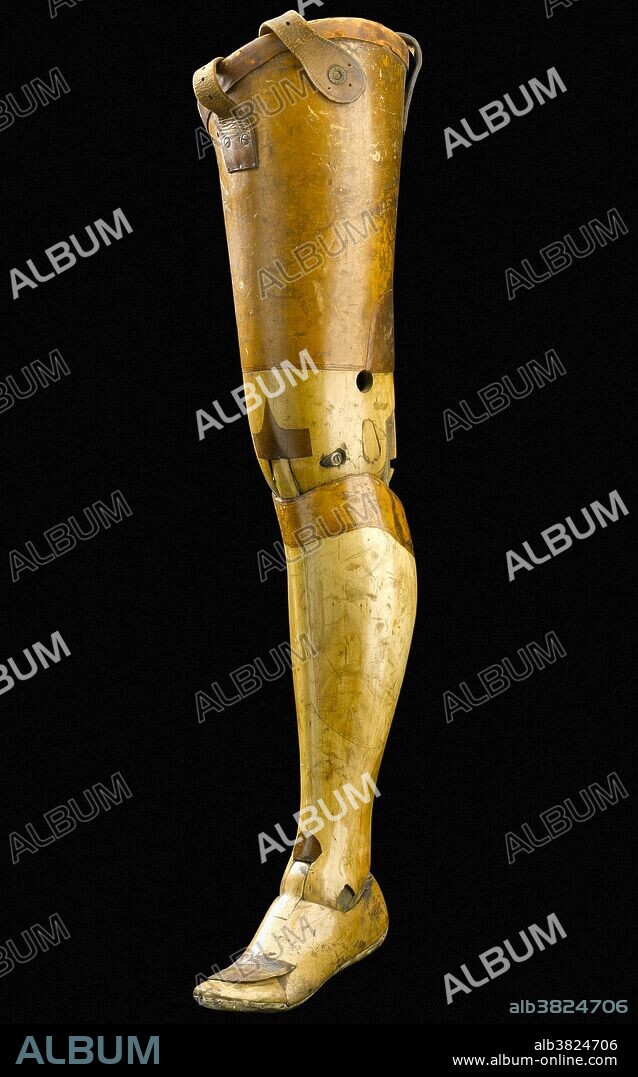alb3824706
Prosthetic Anglesey or Clapper Leg, c. 1900-1940

|
Zu einem anderen Lightbox hinzufügen |
|
Zu einem anderen Lightbox hinzufügen |



Haben Sie bereits ein Konto? Anmelden
Sie haben kein Konto? Registrieren
Dieses Bild kaufen

Titel:
Prosthetic Anglesey or Clapper Leg, c. 1900-1940
Untertitel:
Siehe automatische Übersetzung
Artificial left leg, Europe, 1901-1940. This artificial left leg was made for someone who had their leg amputated above the knee. It is made from willow and leather. It follows the basic design established by the so-called Anglesey leg. This was named after the Marquis of Anglesey. He wore a leg made to this design after he lost one during the Battle of Waterloo in 1815. Earlier versions were also called Clapper legs after the sound the leg made when fully extended. Wooden prosthetic legs were heavy. They were replaced by lighter, metal versions after design innovations following the First World War. 41,000 British servicemen lost one or more limbs during the conflict. However, the Anglesey limb remained popular well into the 20th century. It was relatively lightweight and capable of a natural-looking walking movement.
Bildnachweis:
Album / Science Source / Wellcome Images
Freigaben (Releases):
Model: Nein - Eigentum: Nein
Rechtefragen?
Rechtefragen?
Bildgröße:
3249 x 5215 px | 48.5 MB
Druckgröße:
27.5 x 44.2 cm | 10.8 x 17.4 in (300 dpi)
Schlüsselwörter:
 Pinterest
Pinterest Twitter
Twitter Facebook
Facebook Link kopieren
Link kopieren Email
Email
